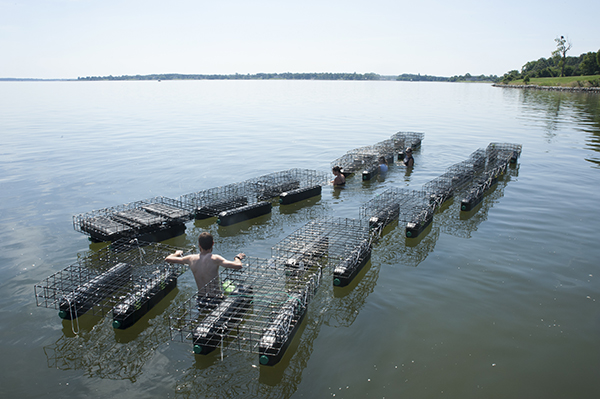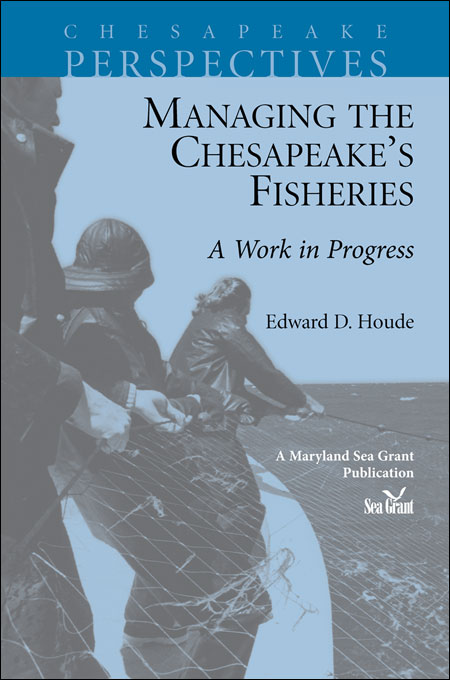Knauss legislative fellowships in Congress help build careers — and they're fun and educational. See our video and fact sheet for details.
New Study to Reduce Fouling on Oyster Aquaculture Equipment

Maryland’s oyster farms have expanded steadily in recent years, offering the promise of new income for the state’s struggling seafood industry. But a challenge for oyster growers in the Chesapeake Bay and worldwide is that fouling by marine organisms reduces the survival and market values of the oysters they grow. Now Maryland Sea Grant Extension will receive $149,000 from the National Oceanic and Atmospheric Administration to study ways to reduce this problem.
Barnacles and bryozoans are among the small marine creatures that settle on oyster cages hung in the Bay’s water column to cultivate oysters for the valuable half-shell market. These pests block water flow through the devices, allowing sediments and algae to build up on the oysters. This biofouling reduces the oysters’ growth and requires costly work to clean them so they are marketable.
The research on ways to prevent biofouling will be done by staff of the Horn Point Oyster Hatchery at the University of Maryland Center for Environmental Science. In 2016 the hatchery established a demonstration oyster farm at Horn Point to test different kinds of oyster cultivation gear, and the researchers studying biofouling will use this farm as a laboratory. The team will also work with commercial oyster growers on the Eastern Shore to determine if the prevention techniques are cost-effective at the scale of commercial production.

This flotilla of floating oyster growing cages is part of the demonstration project at the Horn Point Laboratory. Photo: Daniel Pendick
The Maryland Sea Grant Extension personnel leading the research project include Don Meritt, a shellfish aquaculture specialist; Matt Parker, an aquaculture business specialist; Don Webster, a regional specialist; and Bob Tjaden, interim program leader of Maryland Sea Grant Extension. Another project participant is Shannon Hood of the Horn Point hatchery.
The grant for this project was one of 32 totaling $9.3 million announced today by NOAA’s National Sea Grant College Program, of which Maryland Sea Grant is a part. The grants will support basic and applied research to help spur the development and growth of shellfish, finfish, and seaweed aquaculture businesses. More information about these grants is available on the National Sea Grant website.






